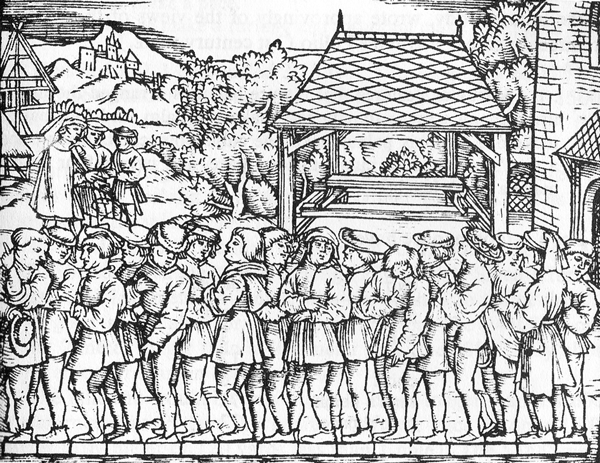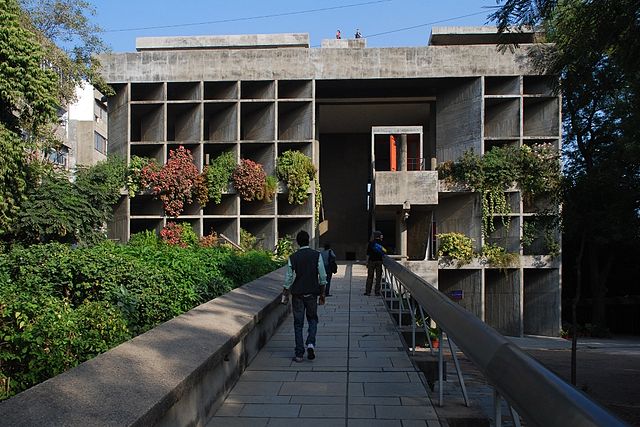Post 4 -by Gautam Shah
.
Measures were the first standards to emerge. The first measures were based on body sizes or capacities but had many racial and regional variations. These local variations were ironed out through barter trading. But, for trade with far-off regions, the same process proved to be very difficult. Intermediaries like, brokers, caravan masters and shippers were making large profits through Conversion of Measures. The inconsistencies of the measure conversions were partly solved with monetary pricing system. Trading blocks had to concur to a common set of Nominal measurements.

Early measure systems such as weights, lengths, volumes, though natural were mutually incompatible, as each had a different scale of sub fractioning. The problem multiplied when equated with equally varied units and sub fractions of monetary units. This was sought to be solved during the French Revolution. During the French Revolution (1870) the National Assembly of France asked French Academy of Sciences to formulate a Scientific and Rational Measure System. Such a system was expected to be: Neutral and universal, Replicable anytime and anywhere, Have decimal multiples, Follow common prefixes and Practical and simple to use. The rationale for such a system forced many countries of Europe to think on similar strategies.

Industrial Revolution period saw faster means of transport and better communication systems. It fostered trade between far off regions and different political domains. The producer and the consumer were very distanced. British, Spanish, French and Dutch empires established trading outposts and their colonies, to control the international trade. These colonial nations maintained their own measurement system. Yet for inter-empire trade there was an acute need for a common, logical, definable, replicable and comparable system of measurements. As nations became free of colonial controls (such as USA) the International trade needed a fair measurement policy.


Metre Convention or Convention du Mètre: Metric System was rational but had too many sub fractions, each of the nations, regions, and trade groups favoured different sub fractions, creating confusion. First International effort to develop a worldwide policy for weights and measures was made during May 1875. Some 17 countries signed a Metre Convention or Convention du Mètre, an international treaty to create a ‘permanent mechanism to recommend and adopt further refinements in the metric system’. This was directed towards defining what constitutes a Standard Measure Units, and means to replicate it in great accuracy anywhere and anytime.
Signatories of the Treaty, were: USA, Germany, Hungary, Belgium, Brazil, Argentina, Denmark, Spain, France, Italy, Peru, Portugal, Russia, Sweden, Norway, Switzerland, Turkey, Venezuela.

Confèence gènvrale des poids et mesures CGPM : After the Convention du Mètre in France in 1875 a Confèence gènvrale des poids et mesures CGPM (General Conference on weights and measures) was organized in 1889. Eight CGPM, at rough intervals of four years, were held till 1933, followed by an inactive period due to world war II. These meetings gradually evolved a worldwide policy on the advice of scientists and metrologists (Metrology is science of measurements). Bureau international des poids et mesures (BIPM), is a permanent laboratory and world centre of scientific metrology, for establishment of the basic standards and scales of the principal physical quantities and maintenance of the international prototype standards.

Formation of ISO (Organisation internationale de normalisation): Soon after WW II, hectic reconstruction activities began everywhere in the world, but major impediments to this were the differing National Standards. To allow free flow of raw materials, equipments and technology a platform of common Standards and Specifications were required. In 1946, delegates from 25 countries met in London to create a new organization, to facilitate the international coordination and unification of industrial standards. The new organization, Organisation internationale de normalisation, ISO, officially began operations on 23 February 1947, in Geneva, Switzerland.
The word ISO was selected to represent the organization in all languages, because it is derived from the Greek isos, meaning equal.

Systeme International d’Unites (SI units) : 9th CGPM in 1948, meeting after 15 years gap due to WW II formally adopted a recommendation for writing and printing of measure unit symbols and numbers. The name Systeme International d’Unites (International System of Units), with the international abbreviation SI, was adopted for this New Metric System. In 1960, the CGPM revised and simplified the measure system. Seven Base Units, such as: meter (Length), kilogram (Mass), second (Time), ampere (Electric current), kelvin (Temperature), mole (Substance), and candela (Luminous intensity), were established.


SI Measurements: As a designer, we are concerned with formulating or creating new entities, and also using ready parts and components. For both the purposes, we need to specify the Measures. ISO has formulated rules for Writing and Specifying Measures in drawings, documents, specifications and other forms of communication. This is done to avoid any ambiguities in interpretation of information.
Writing and Specifying Measures: These are rules per ISO, and also better methods of writing measurements on DESIGN RELATED DRAWINGS. These apply to manual drawings and also CAD representations.
◆ All decimal numbers must be preceded by a zero, if no other digit exists. e.g. 0.121 (and not as .121 )
◆ No thousand or hundred markers are to be used, e.g. 1000 (and not 1,000), but where large number of digits are involved, a blank or space (equal to 1 digit or not less than ½ digit in width) may be used as a separator, in place of a marker. However, where only four digits are used no space as a separator need be provided. e.g. 100 000, 10 000 or 1000 (but not 1 00 000 or 1 000).
◆ For Length units recognized measures are km / m / mm which may if required must be in small letters. For example architectural plans have nearly all measures in mm, so the mention of mm should be avoided. However, in the same drawing if weight or volume or such other measures are to be indicated, then identifiers for such units may be indicated.
◆ Architectural drawings nominally have dimensions of maximum 5 digits (for mm) unless a detail requires indicating a fraction of a millimetre, signifying measures up to 99999 mm or 99.999 mts (-but unit identifiers are not to be used). Plans larger then 99mts sizes are considered of Map Category.
◆ Full names of units even when these are named after a person, are written in small letters: ampere, volts etc., with the exception W for watt and J for Joule.
◆ For liquid measure (Litre) however lt may be written as Lt (to differentiate between 1 and l ).
◆ Plurals of measures need not be used. (kms, mts, kgs).
◆ Point or Full stop for abbreviation may not be used, for example as in m.g. or ml.
◆ Where cubic or square measures are to be shown: 3m3 = will mean three cubic metres and not 33 i.e. 3 x 3 x 3 = 27cmt.
◆ Where traditionally only one unit is accepted, and if there are no chances of ambiguity, the measure nomenclature (mm, km, gm etc.) may not be mentioned (e.g. cloth width = 1.200). If in one sheet of drawing (or a document) only one scale and one mode of measure are used, the nomenclature may be mentioned as a general instruction for the drawing.
◆ Where drawings or details are likely to be graphically reduced or enlarged in processing / copying, a graphical scale preferably showing 100 mm bar may be shown. If 100 mm size is not suitable due to micro reduction or macro enlargement, suitable multiples of 100 mm for upwards scaling and 10x fractions of 100 mm for downwards scaling maybe used.
Measurements on Drawings: When both mt & mm are used on drawings, it will be less confusing if the dimension is always written to three places of decimals, i.e. 3.450. No unit symbol need be shown unless a lesser number of decimal places are used; i.e. 3.450 or 3.45 m and under some circumstances 3.5 m, are all correct. Of the options, 3450 and 3.450 both are preferred. Where no ambiguity can arise, symbols may be discarded, according to following rules:
- Whole numbers indicate mm
- Decimated fractions to three palaces of decimals indicate m (and also by implication, mm)
- All other dimensions must be followed by the unit symbol.
- Where dimensions refer to different types of measures (lengths, weights, temperature etc.), preferably all units should be indicated or all units other than the major one should be indicated.
- Main dimensions and the tolerance (fitments, limits, margins etc.) etc. should be in the same unit system.
- Where main dimensions are accompanied by + or – range, both should be in the same unit.

Need for a Coordinated Measure System: Consistency of dimensions allows use of standard tools, equipments, plants and technologies. The dimensional consistency can rationalize the conversion processes, storage, handling, and waste management. ‘Raw materials or Finished product‘s are transient terms for goods. A finished product is a raw material for some other process. Raw materials procured in a linear, square, volumetric, weight or liquid measures get processed into a different ‘measure’ entity. And so for products transiting from one measure phase to another, a persistent dimensioning system is very advantageous.
ISO Modular Preferences
The SI recognized that widely spaced (1000 factored) measurements were either too large or small and not amenable to unit formation for processes like planning, design, production, transportation, fabrication or execution, etc. ISO (International Standards Organization) as a result devised a practical modular system of dimensions known as ISO Modular Preferences. Most National Standards (including Indian Standards) are enforcing the same. It accommodates traditional modular systems, such as foot-Inch and earlier versions of the metric systems. This was done for wider acceptance and to achieve a gradual changeover.

ISO’s Four Preferences for Modular Coordination
- First Preference 300 mm = 12″
- Second Preference 100 mm = 4″
- Third Preference 50 mm = 2″
- Fourth Preference 25 mm = 1″
▪ First Preference is favoured by the building materials’ industry. Plywoods and other wood products are available in modules of 300 such as 600, 900, 1200, 1800, 2400 etc. Large buildings are designed with 300 as the modular measure. But, for smaller spaces such as Bedrooms, toilets, second preference of 100 is used as a module.
▪ Second Preference is considered to be the most appropriate one for Building components and Planning. Glazed Tiles are available in multiples of 100 mm, with sizes like 100 x 200, 200 x 200, 200 x 300 etc., and also in sizes such as 150 x 150, 150 x 200 etc. as a carry over from the old system. Fabrics have widths of 600, 900, 1000, 1200, 1800 etc. For Windows or Doors width x height are measured in 100 mm increments.
▪ Third and Fourth Preferences are not to be used for basic object sizes of more than 300, unless there are strong economic or functional reasons for doing differently.

Implications of Modular Coordination of Dimensions : There are many products where smaller modulation or variations are desirable such as Garments and Shoes. ISO Modular Preferences, also do not consider variations in naturally available materials. Furniture, fittings and fixtures designed with ergonomic profile or serving anthropometric, inconsistencies have no specific accommodation in this system. ISO is a modular system to form a grid or matrix for macro planning and in that sense takes a superior position. Components and parts are expected to fit in the system and as a result, work-sizes of components and assemblies should be determined by taking account of space for joint and allowance for tolerances.
The ISO Modular Coordination of Dimensions, is unnatural and does not relate to human body. It creates an ‘order that lacks beauty‘. ISO Modular system has predictable progression-digression, unlike many mathematical orders and systems like Corbusier’s Modulor system.

ISO Modular Preferences, as a universally agreed system of preferred measures, disciplines design, procurement, production, conveyance, handling, storage, distribution, usage, wastage and reuse or recycling of materials. The system provides a level ground to compare standards of various countries, and evolve world standards (ISO) for various products, services and work or operational procedures. It has made the writing of specification lucid and logical. It simplifies taxation procedures, costing, estimating, and valuation. It also rationalizes deployment of human and energy resources. It has made quality control procedures very objective.
An Abstract Dimension Modulating System like ISO stifles the creative instincts but has universal acceptance. The Dimensioning system defies all localized traditions, cultural variations, anthropometric distinctions, racial biases and geographical peculiarities.
.
09 HISTORY of SPECIFICATIONS part of the lecture series DESIGN IMPLEMENTATION PROCESSES
2 thoughts on “HISTORY OF SPECIFICATIONS -09”